2018–19 summer: Peanuts on grey soil, Bundaberg
Grower: Chapman Family. Tony has grown peanuts on and off for the past 18 years and does his own crop monitoring with the help of his son Mitch. Agronomic support is provided by consultant Peter Hatfield.
Farming system: The Chapmans run all farming operations, including the peanuts, under a controlled traffic and zonal tillage system. They follow a 5-year rotation of plant cane + 3 ratoons followed by either peanut or soybean, then field pea before returning to plant cane in spring.
The Chapmans are keen to use cover crops ahead of planting their summer legume. Having previously tried tillage radish with good results, this year they have tried a multi-species cover crop ahead of this peanut crop.
Location: Calavos, Bundaberg
Monitored area: 11.5 ha, irrigated block, grey soil
Pre-plant preparation
- 26 June 2018 – cane harvested. Stool removed using zonal tillage to cultivate a 1.2 m bed.
- 3 July 2018 – Multi-species cover crop of sunflower, tillage radish, barley and field pea planted by broadcasting. Good germination achieved, even up to 50% germination in uncultivated wheel tracks. Good moisture storage for the peanut crop to follow.
- 8 September 2018 – sprayed out cover crop using knockdown herbicides RoundUp and 2,4-D.
- Lime and dolomite broadcast before planting peanuts.
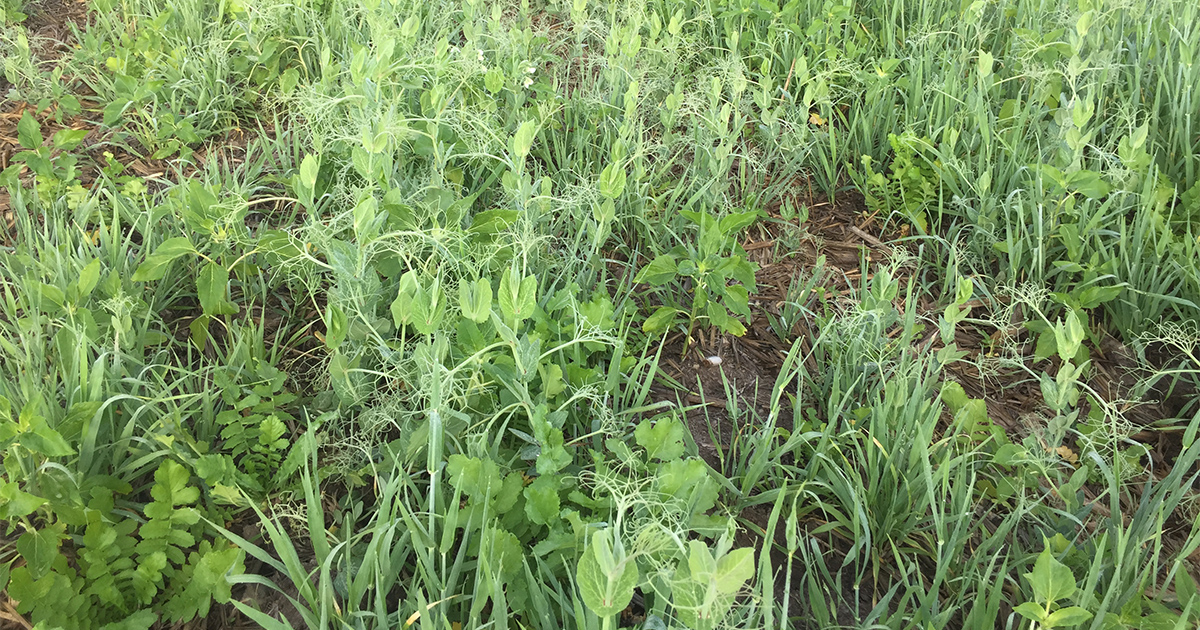 Multi-species cover crop of sunflower, tillage radish, barley and field pea.
Multi-species cover crop of sunflower, tillage radish, barley and field pea.
Weeks 1–7
Management notes:
- 7 November 2018 – Kiari peanuts direct drilled into beds at a sowing rate of 160 000 seeds per ha.
- Good moisture retained from cover crop. Double row beds sown 685 mm apart under controlled traffic system with wheel spacings 1.83 m.
- Seed inoculated at planting using water injection of group P peanut inoculant.
- Recommended fertiliser blend also applied at planting.
- 9 November 2018 – post-planting application of knockdown (Gramoxone) and residual (Dual Gold) herbicides to control ratoons, cover crop survivors and other existing weeds.
- 12 November 2018 – low pressure overhead irrigation. Good moisture at depth.
- Late November – zinc, gypsum, urea and sodium molybdate applied together.
- 13 December 2018 – chlorothalonil fungicide (Barrack 720) applied as protective control of leaf spot and rust.
- 24 December 2018 – manganese sulphate and magnesium nitrate applied.
- 29 December 2018 – second application of Barrack 720, with Solubor.
Week 8
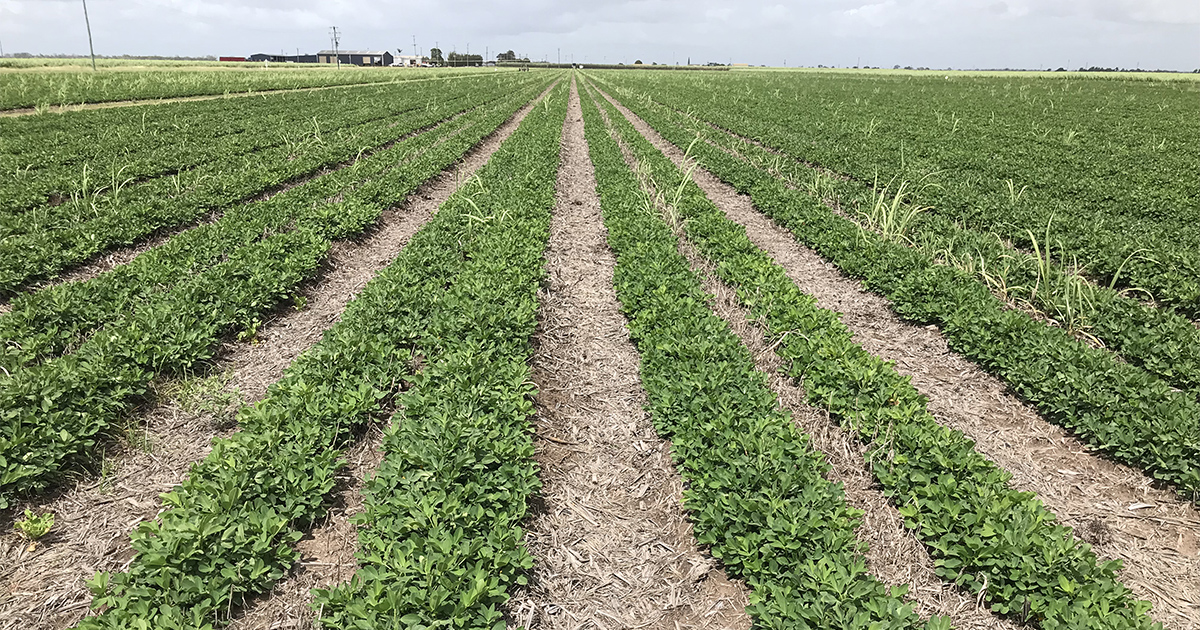 Management notes:
Management notes:
- Crop is flowering well and plants are healthy.
- 1 January 2019 – a herbicide application was made to control grass weeds.
- 3 January 2019 – low pressure overhead irrigation.
- Tony plans to apply Flame herbicide for broadleaf and nutgrass control and to continue monitoring for heliothis to act with a Vivus Max application when necessary.
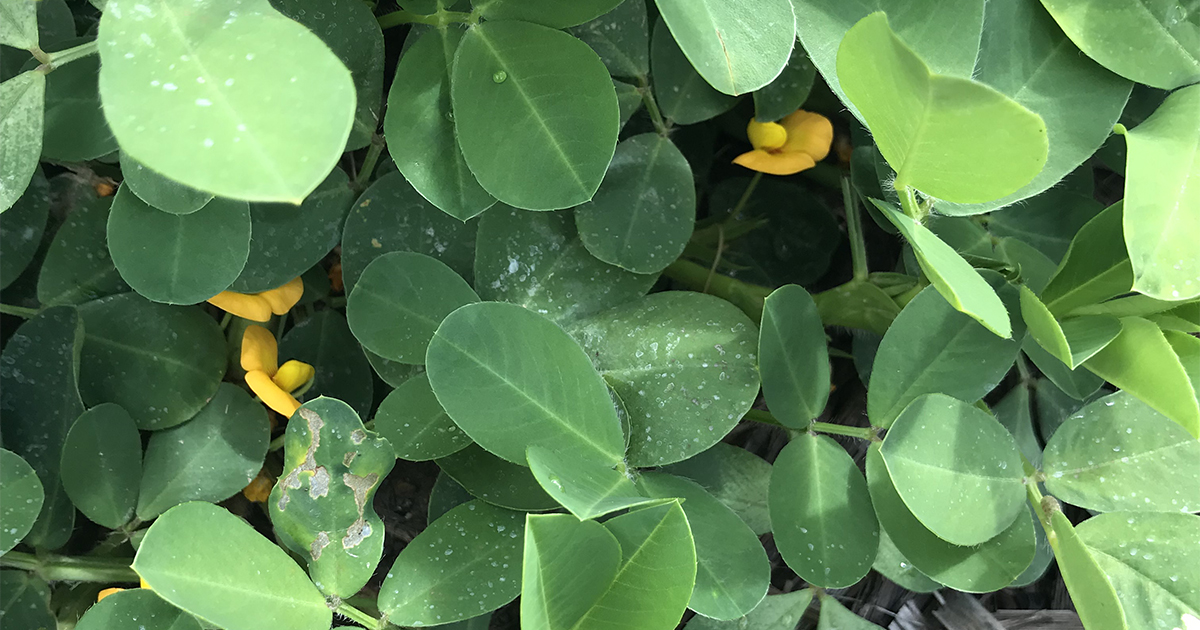
Week 9
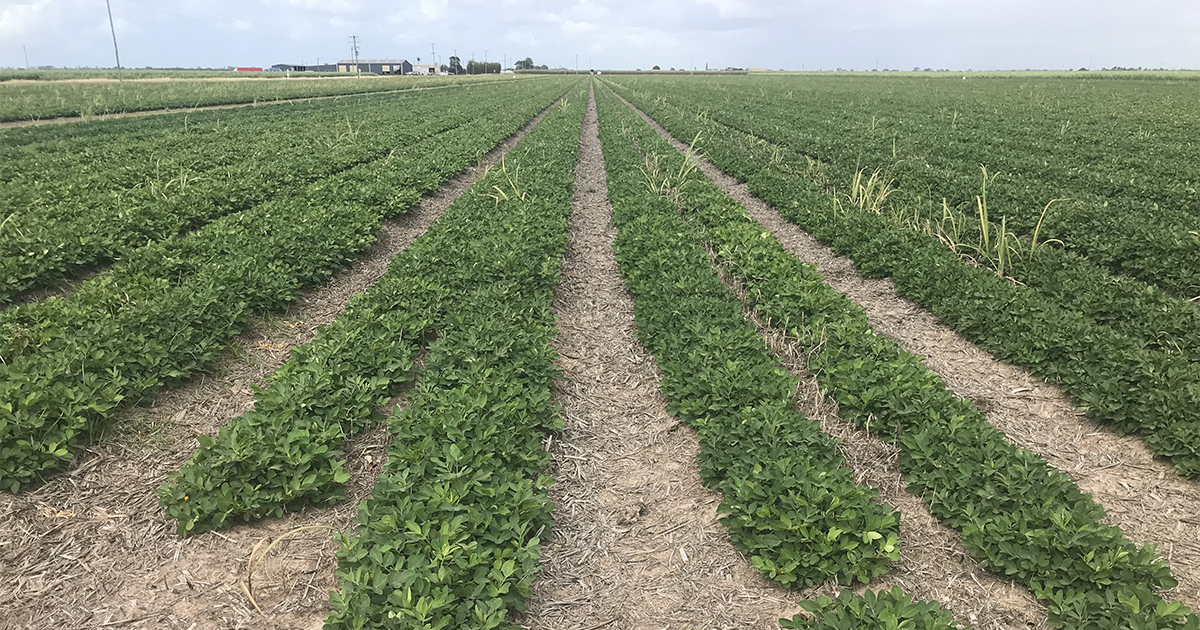
Management notes:
- Post-emergence and pre-emergent herbicide application of Flame and Blazer with Hasten to control ratooning cane, emerged broadleaf and grass weeds and nutgrass.
- Evidence of herbicide burn from the use of Blazer on peanut leaves and a very small amount of chew damage on leaves, otherwise a healthy-looking crop.
- Flowers are still present.
- Pegs about 80–90 mm long were observed.
- Tony has scheduled an irrigation in the coming week as well as another application of Barrack 720 (chlorothalonil) fungicide for protective measures against leaf spot and rust.
 Pegging underway
Pegging underway
Week 10
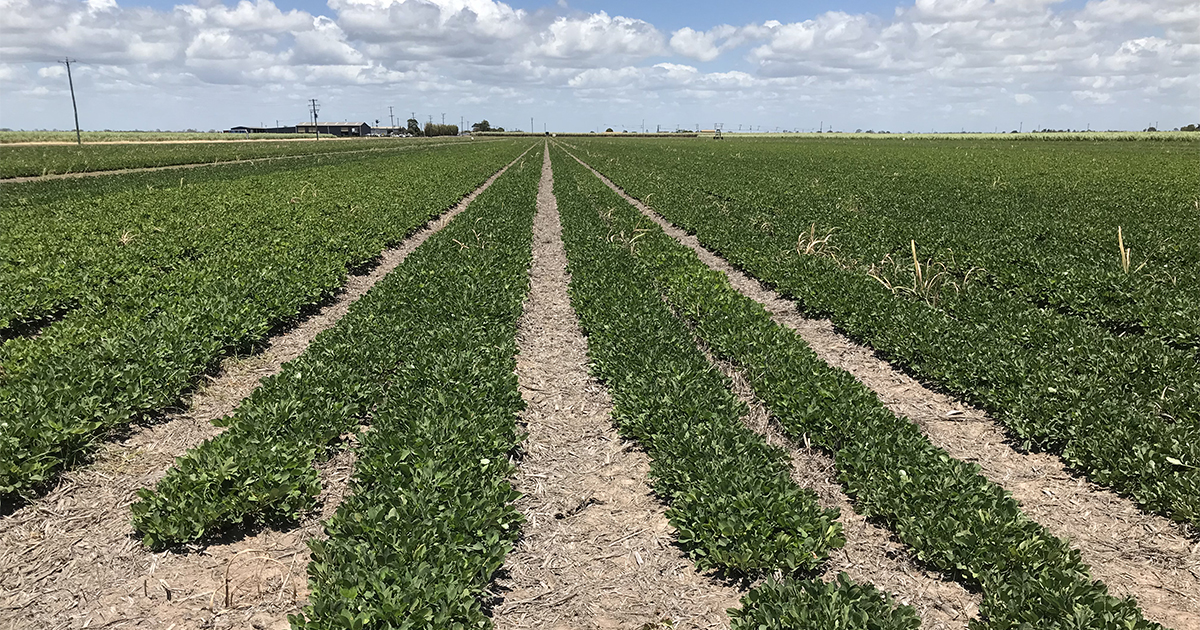 Management notes:
Management notes:
- Ratooning cane sprayed with post-emergence herbicide 2 weeks ago is dying off.
- Small amount of chew damage on older leaves.
- Flowering has slowed but new flowers are still evident.
- Row closure within the bed has occured across about 80% of the field.
- The crop is generally healthy however yellowing of new leaves was observed in majority of the block, suggested to be because they emerged soon after an irrigation.
- The block was irrigated this week and Barrack 720 fungicide was applied.
- Soil moisture level will be closely monitored and another irrigation applied if necessary in the coming week.
 Slight yellowing of new leaves following irrigation.
Slight yellowing of new leaves following irrigation.
Week 11

Management notes:
- Crop was observed to have spotting on leaves that resembled leaf spot disease, as well as large clusters of aphids (suspected cowpea) on the unrooted, developing pegs.
- Flowering has mostly ceased.
- Peanut pods are beginning to develop.
- The peanut canopy is continuing to fill in the space between rows.
- An irrigation was made over the last week
- The coming week will focus mainly on moisture levels and making another irrigation if necessary and will apply Amistar Xtra to treat the leaf disease present.
 Suspected leaf spot.
Suspected leaf spot.
Week 12
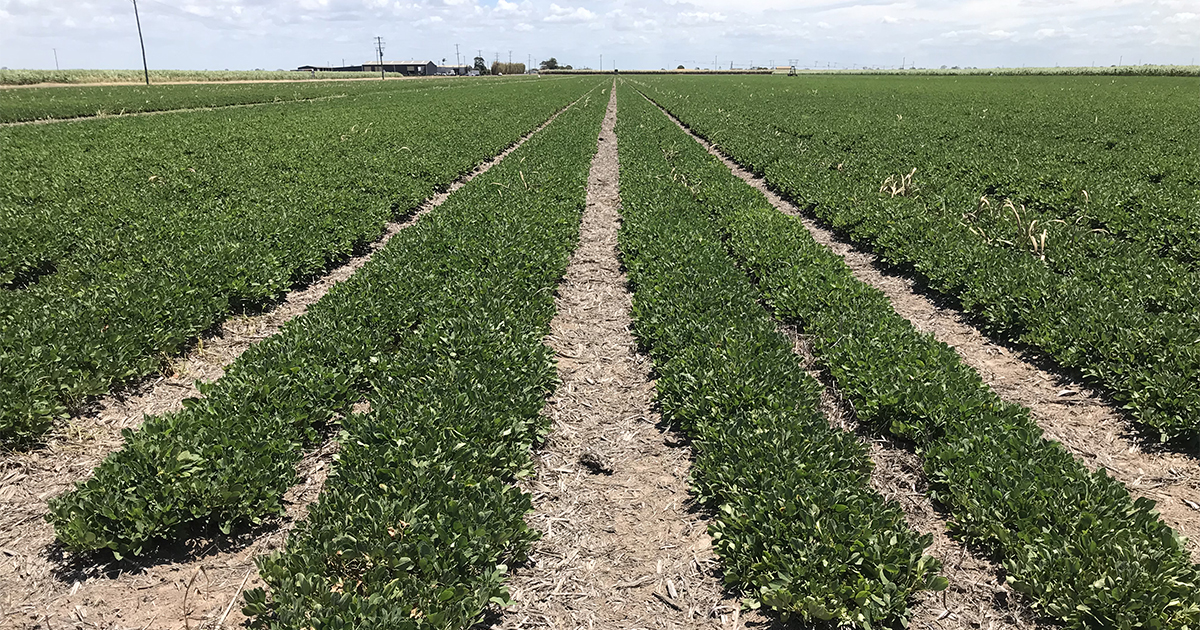
Management notes:
- Crop appears green and healthy. The canopy is covering the entire bed in approximately 95% of the block.
- The Amistar Xtra applied last week seems to have reversed the signs of leaf spot, with only a small number of plants showing symptoms within the block. It was also confirmed by agronomist Peter Hatfield that white rot is not an issue in this block, but more likely to be a saprophytic fungus living in the decaying trash and not affecting peanut production.
- Minor leaf damage observed caused by heliothis, some monolepta beetles is also evident in hotspots, but control is not warranted at this point.
- Peanut pods are developing nicely with some quite large for their age. Peanuts inside are approximately the size of a pinky fingernail on average.
- An irrigation was made over the last week with an application of Vivus Max mixed with molasses scheduled this week to finish off the block.
- Phasey bean has also been hand-weeded from the block over the last week. Tony is not as worried about the effect they have on peanuts but removes them so that their seeds won’t contaminate soybean samples if he decides to plant soybeans after the peanuts.
- Another application of Barrack 720 protective fungicide is scheduled this week with the hope that this could be the final application, weather permitting.
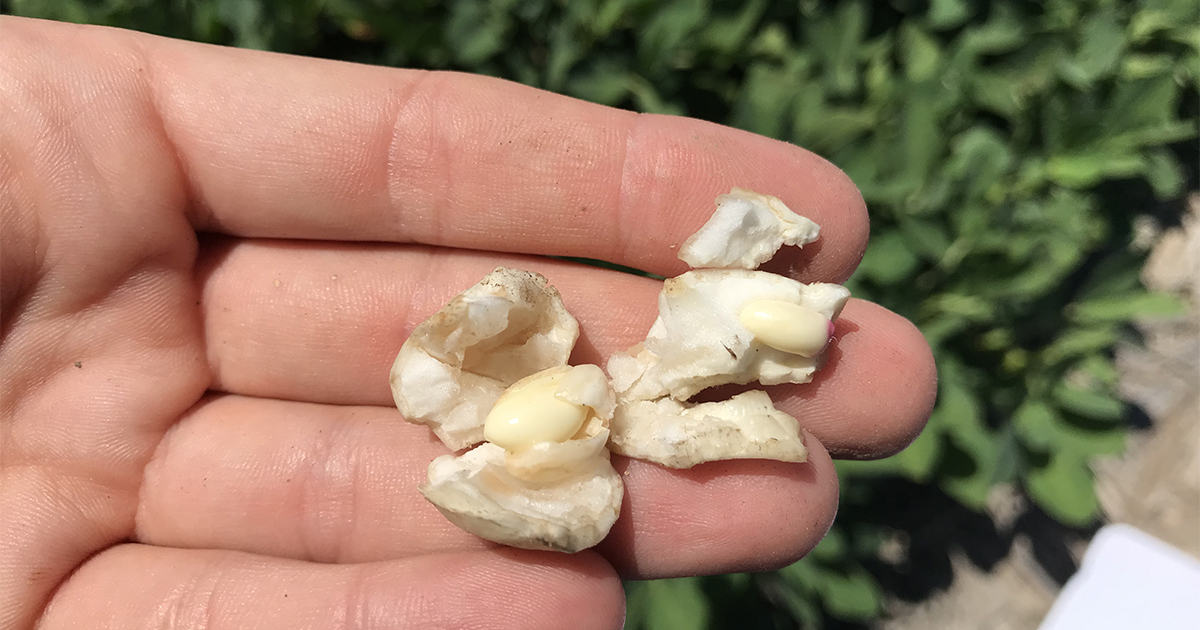
Week 13
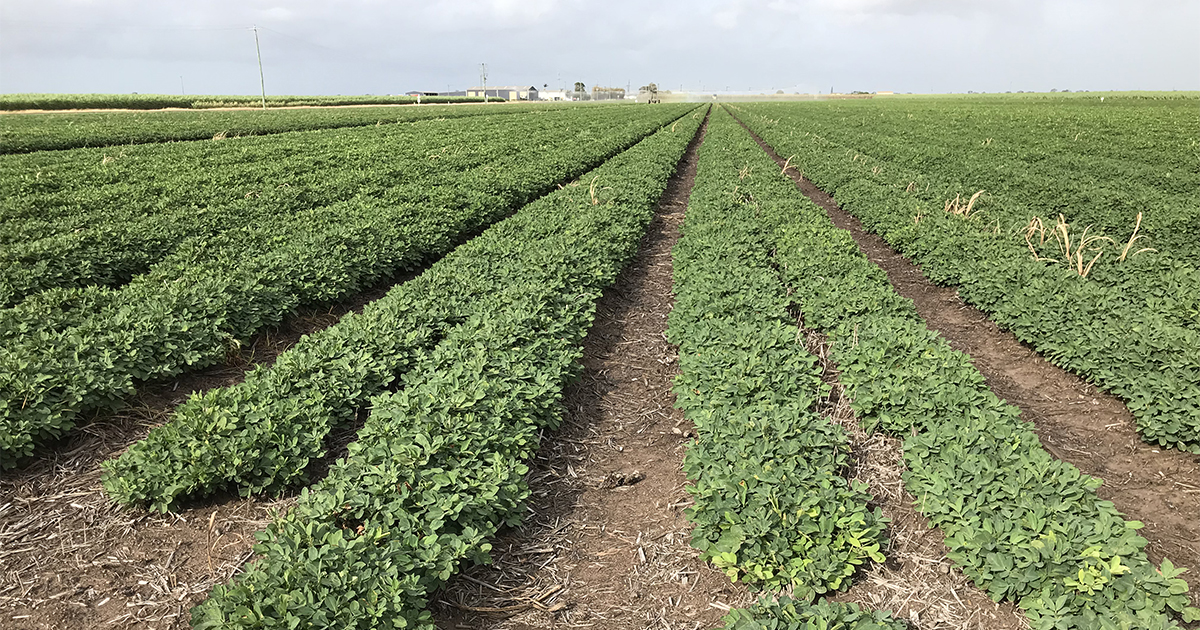
Management notes:
- Crop is green and healthy with good canopy cover. The trash cover in the interrow is good and there are no weed issues occurring in the crop or in wheel tracks.
- Minor leaf damage observed caused by heliothis and/or monolepta in spots. A Vivus Max application with molasses was applied last week and no control measures scheduled for monolepta yet.
- Peanut pods are developing nicely with some of the bigger pods measuring 4 cm. The peanuts developing inside were approximately 1 cm in length.
- On 7 February an irrigation was being made over the block.
- Few insect pests were identified including little to no aphids on the developing unrooted pegs, which had been seen in previous weeks.
- A moderate population of ladybugs were observed including a small number of pupae and hatched pupae shells. These bugs in all their stages are predators to aphids and hence may be occurring in large numbers due to the previously observed aphid infestation.
- Another application of Barrack 720 protective fungicide was applied this week.
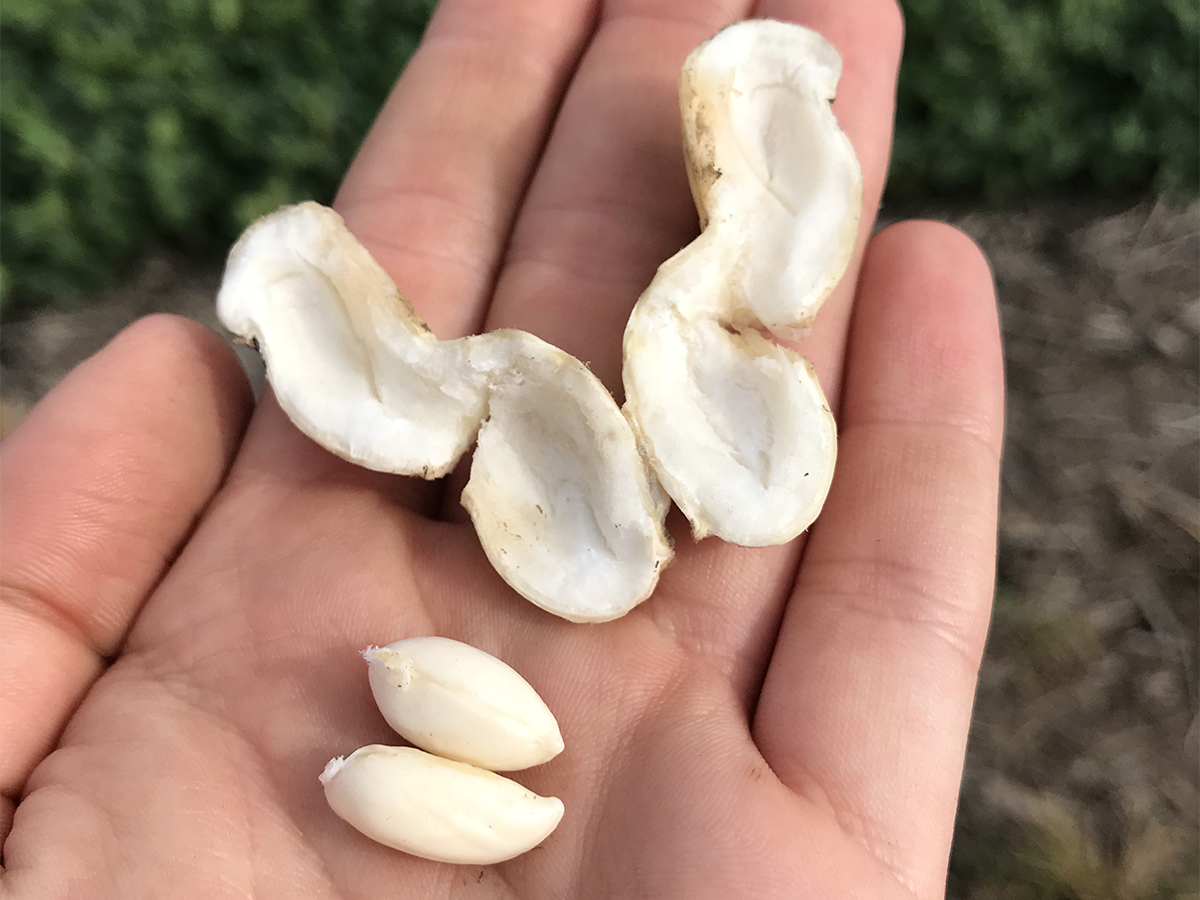 Peanut pods are developing nicely with some of the bigger pods measuring 4 cm. The peanuts developing inside were approximately 1 cm in length.
Peanut pods are developing nicely with some of the bigger pods measuring 4 cm. The peanuts developing inside were approximately 1 cm in length.
Week 14
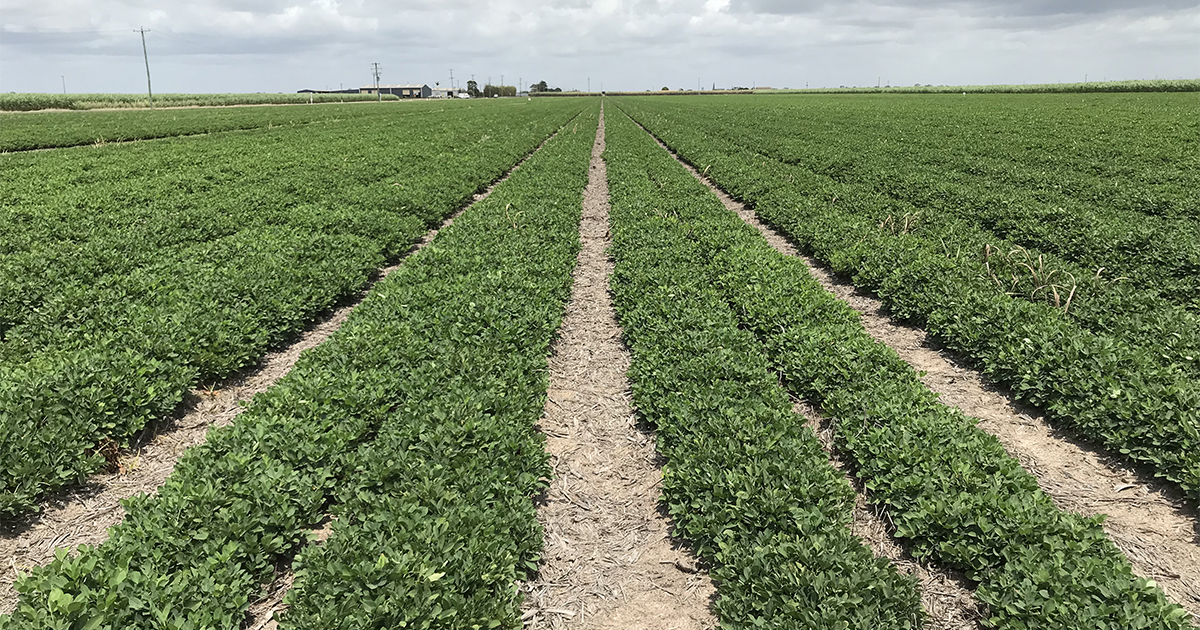 Management notes:
Management notes:
- Peanuts are looking good. Watch for Heliothis and Monolepta which are present in other areas.
- Irrigation is important now to avoid moisture stress. The crop is filling pods so adequate moisture is essential.
Week 15
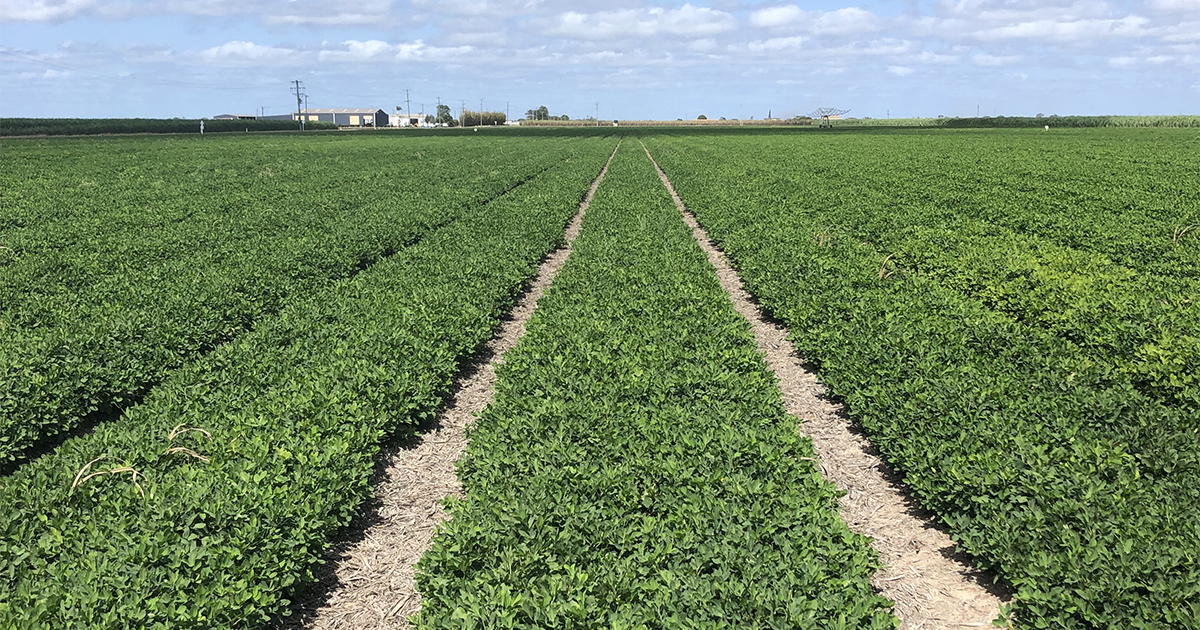
Management notes:
- Peanuts are looking good.
- Careful consideration should be given to the spray schedule in the next week. As the treat of the cyclone and heavy rain looms closer growers need to look at their program.
- Make sure to allow for wet weather and don’t be caught out unable to spray because of wet blocks, a shorter schedule may be required to allow preventative sprays to get on in dry conditions while they can be performed and not stretch your interval out past 2-3 weeks.
Week 16–17
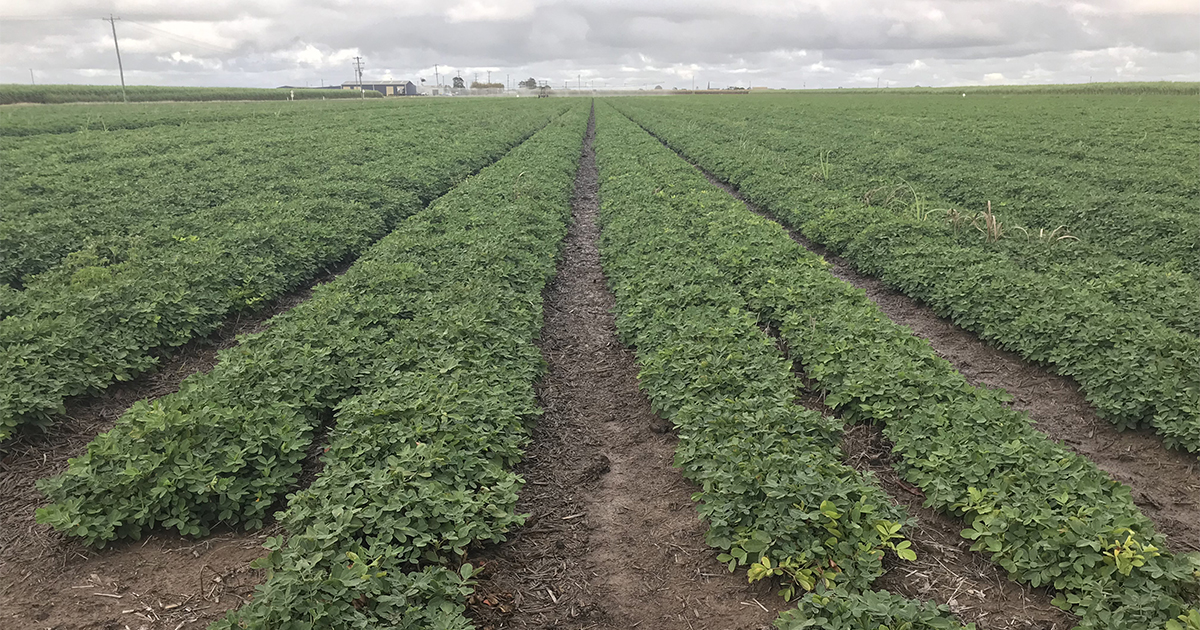 Management notes:
Management notes:
- Crop is coping quite well with the dry conditions here in Bundaberg. Cyclone Oma did not make landfall and we missed out on the rain it promised. Showers are occurring over the region this week, but irrigation is still of high importance at this stage.
- A few broadleaf weeds and cane ratoons are emerging in the crop and wheel tracks.
- Old leaf damage observed in spots, but no causal agents were identified.
- New pegs are developing as well as new pods. The peanuts developing inside larger pods were approximately 2cm in length and about 1cm wide across the peanut.
- A small population of ladybugs was present but no significant insect pest populations observed.
- Slight yellowing of new growth occurring mainly interveinal, could be an indication of a nutrient deficiency however the growers have been advised that it’s not necessary to correct at this point.
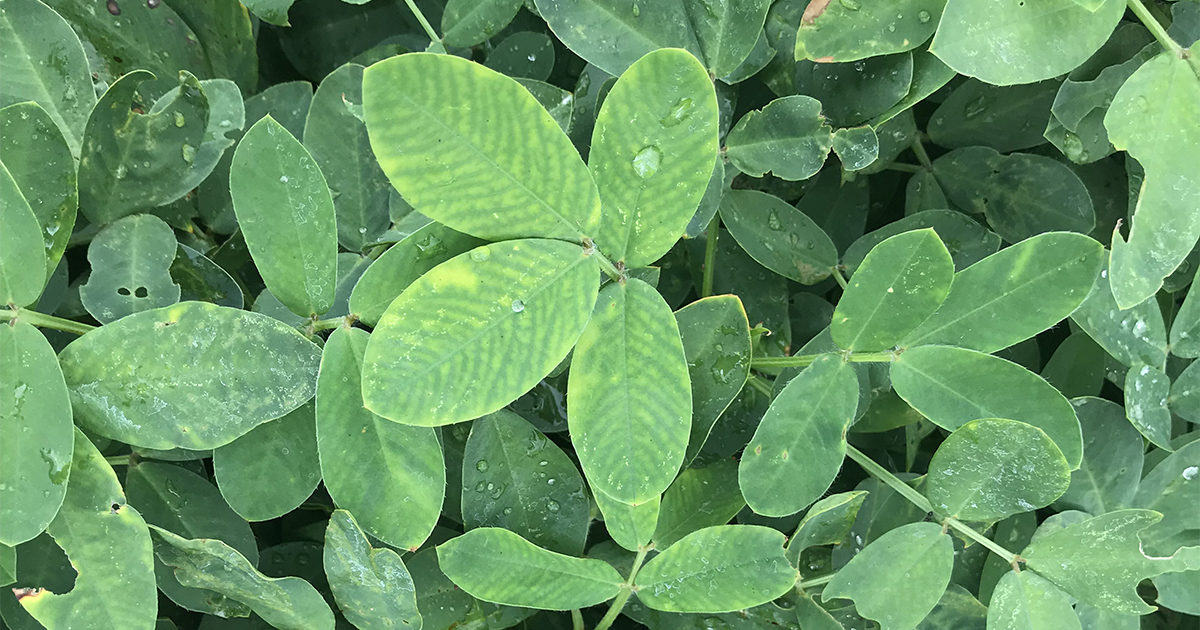 Possible nutrient deficiency but no action required.
Possible nutrient deficiency but no action required.
Week 18
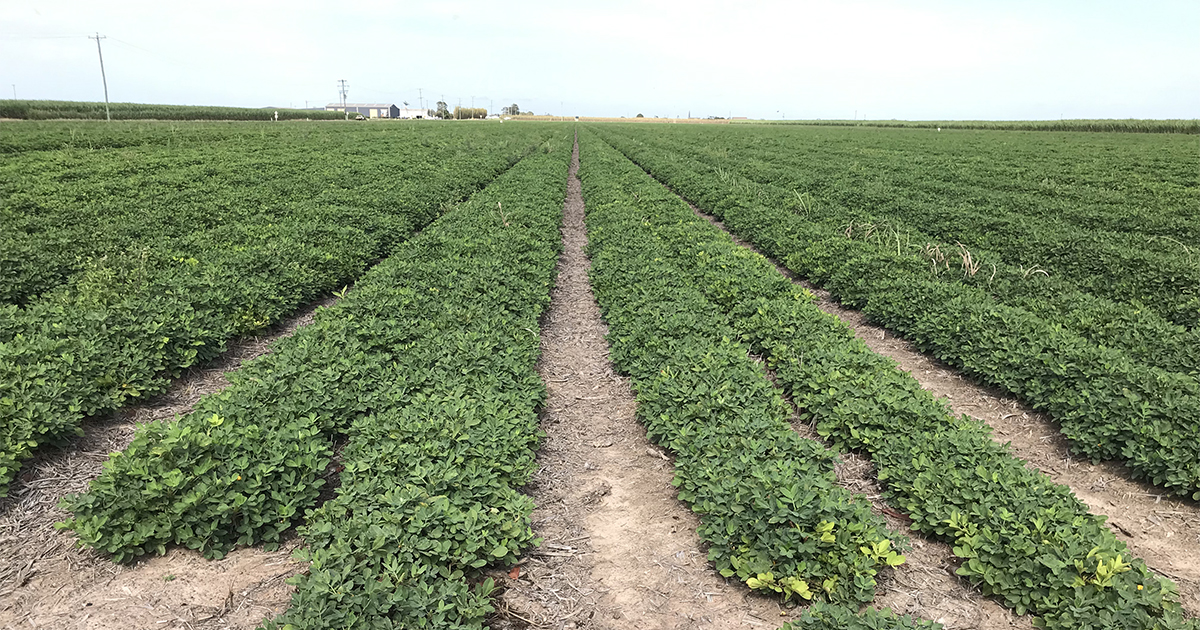
Management notes:
- Crop is coping quite well with the dry conditions. This week is forecast for very hot weather with no significant amount of rainfall expected.
- Moderate population of phasey bean, broadleaf weeds and cane ratoons established in the crop.
- Slight yellowing of new growth occurring mainly interveinal. Some of the new leaves appear to be growing out of the yellowing, and others appear to have brown margins occurring on the leaf edge.
- Flowers are continually coming and going, and pegs are continually developing on new plant growth.
- Hand weeding of the phasey bean may be scheduled for the coming week as well as trying to keep up water to the crop.
 Time for a bit of handweeding.
Time for a bit of handweeding.
Week 19
 Management notes:
Management notes:
- Still very little rain has fallen over the Chapman's property hence irrigation is still of high importance. Crop is coping well.
- Growing population of phasey bean, broadleaf weeds and cane ratoons established in the crop.
- Varying pod sizes and stages of pod-filling observed as expected in peanuts. Some of the peanuts in the larger pods are between 2.5-3cm long, with pink seed coats.
- In the coming couple of weeks, a maturity test will be carried out to determine how close we are to harvest.
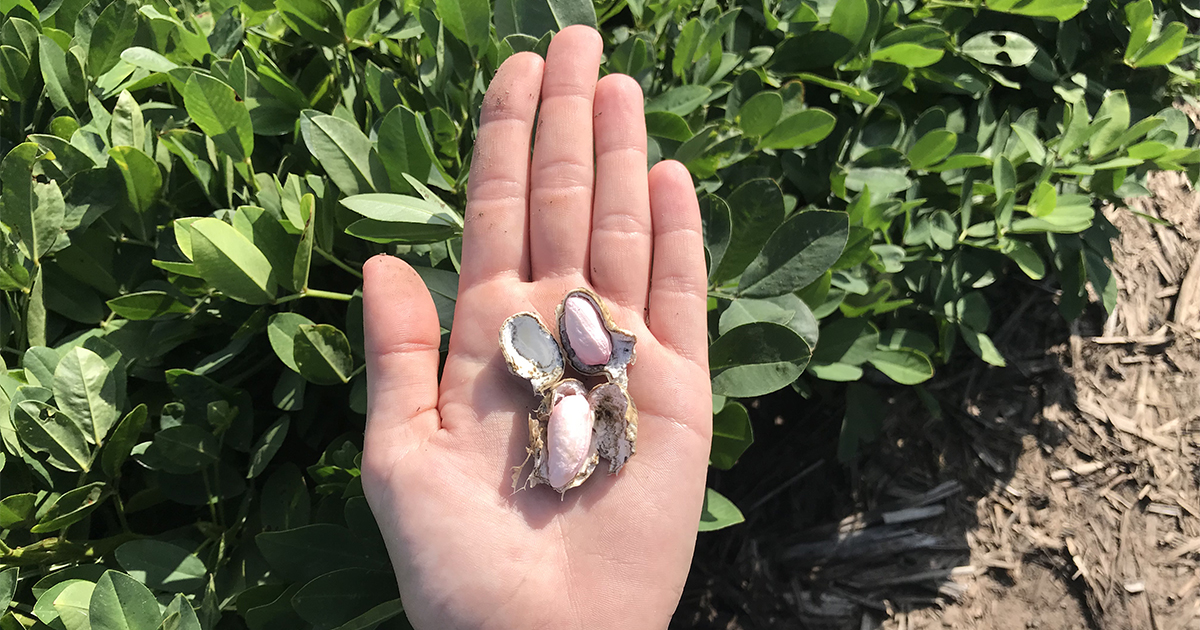 Larger pods heading for maturity
Larger pods heading for maturity
Week 20
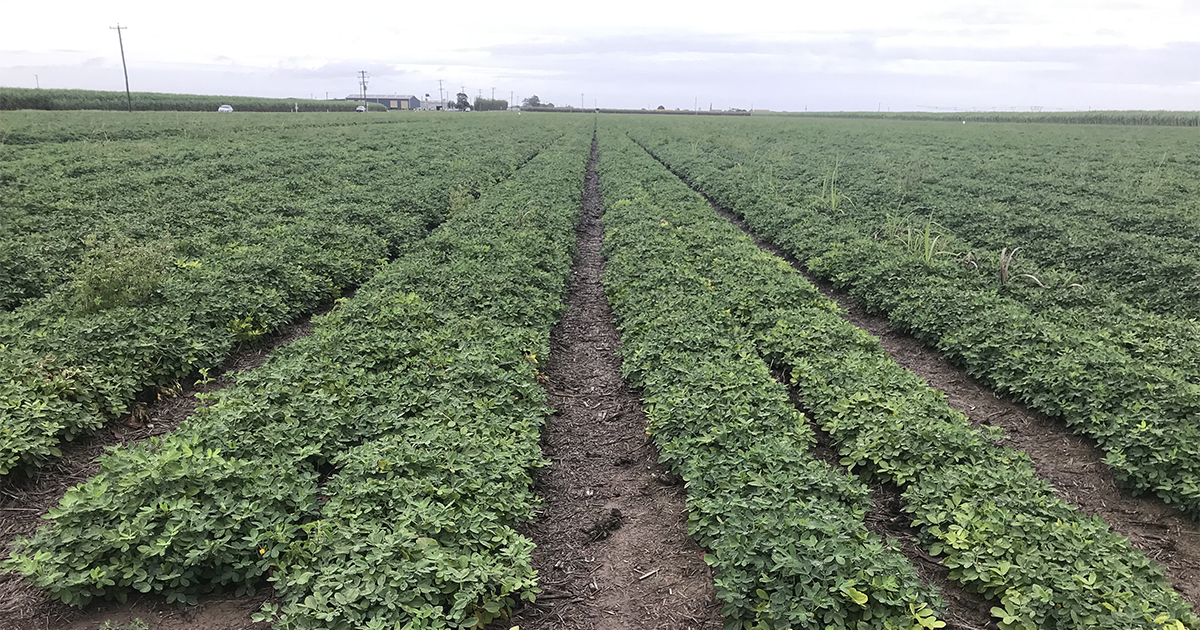
Management notes:
- The rain has finally come! Chapmans have recorded 22 mm over two days and while it is not a lot of rain it is plenty for developing peanut kernels.
- Crop still green and healthy. A few flowers still emerging and plenty of new growth observed.
- Phasey bean was hand-weeded from the paddock this week, which has cleaned it up nicely.
Week 21

Management notes:
- The temperature had cooled off here in Bundaberg over the last week, however some hot days are forecasted for the weekend.
- Crop still green and healthy and peanuts have been tested for maturity.
- Tony is planning on harvesting his peanuts early next week as there are a large percentage of mature peanuts. This depends on moisture so that digging runs smoothly.
- A few kernels have germinated in the field – another reason to get the digger in soon.
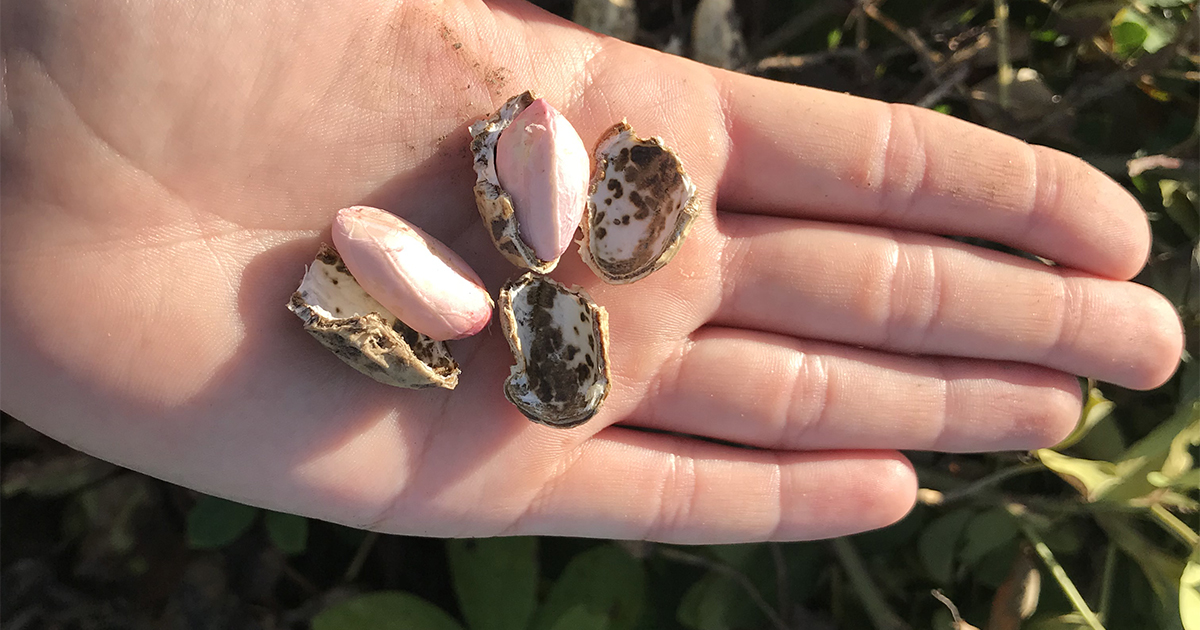 Mature peanuts ready for harvest.
Mature peanuts ready for harvest.
Week 22
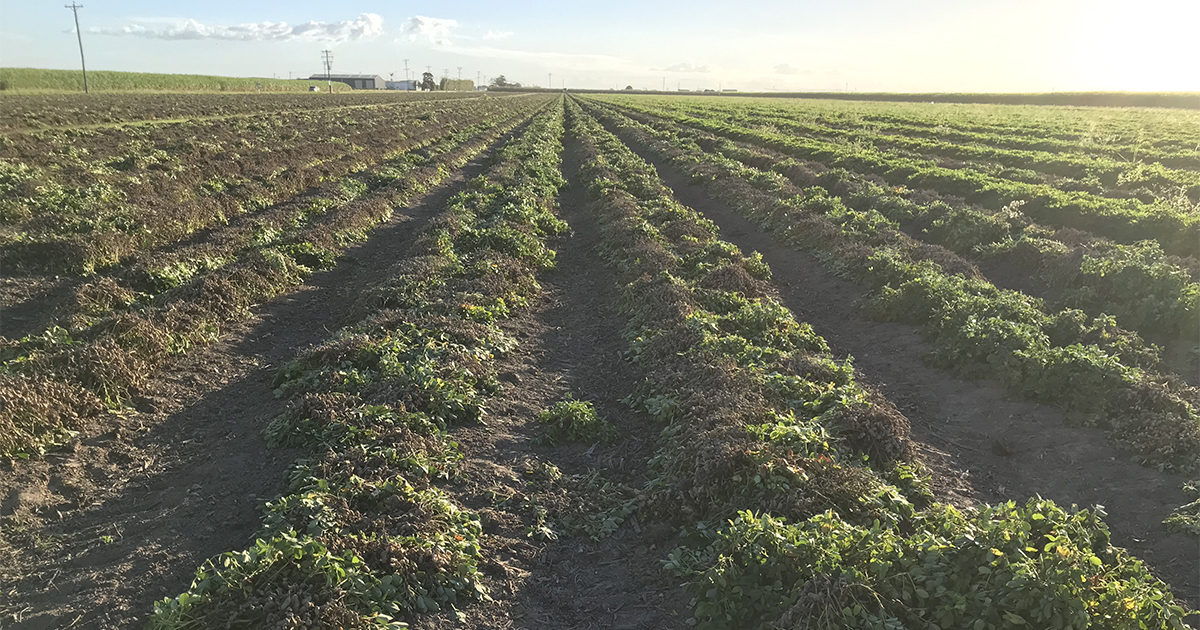
Management notes:
- Peanuts are being dug this week. The digger turns the plant over to expose the peanuts to the sunlight.
- The peanuts will be left to dry now for a week or so until the moisture content is reduced to around 12-16%, lower the better to avoid further drying at the processing factory.
- Sizes of the peanuts ranged from small and underdeveloped to quite large which is where the good returns lie.
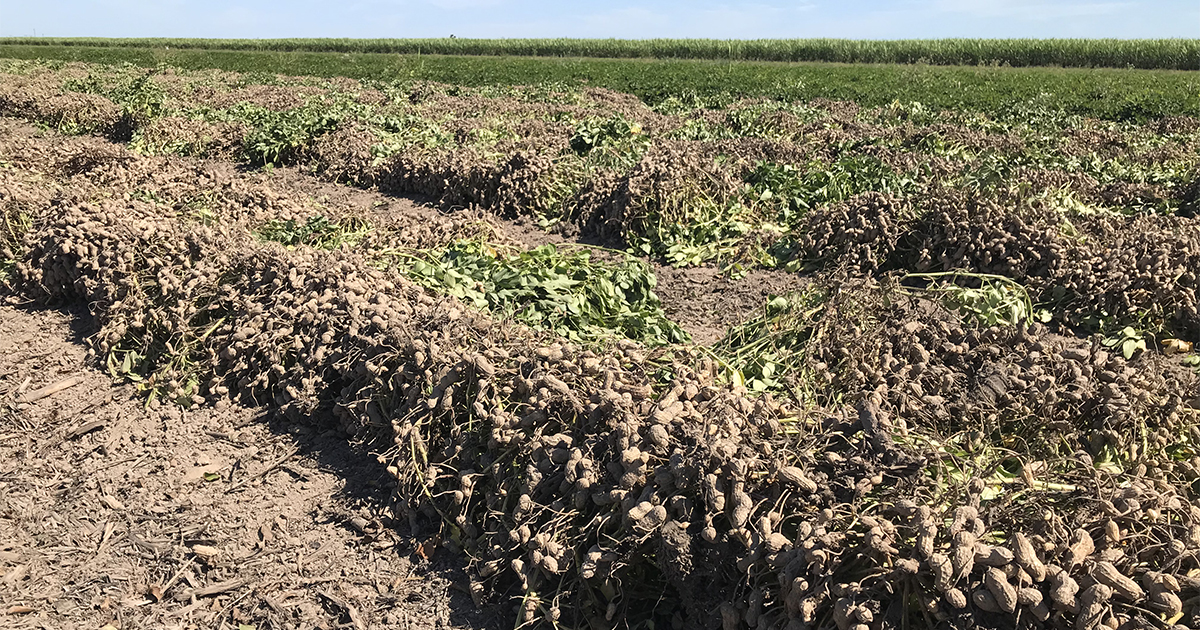 The digger turns the plant over to expose the peanuts to the sunlight.
The digger turns the plant over to expose the peanuts to the sunlight.
Week 23
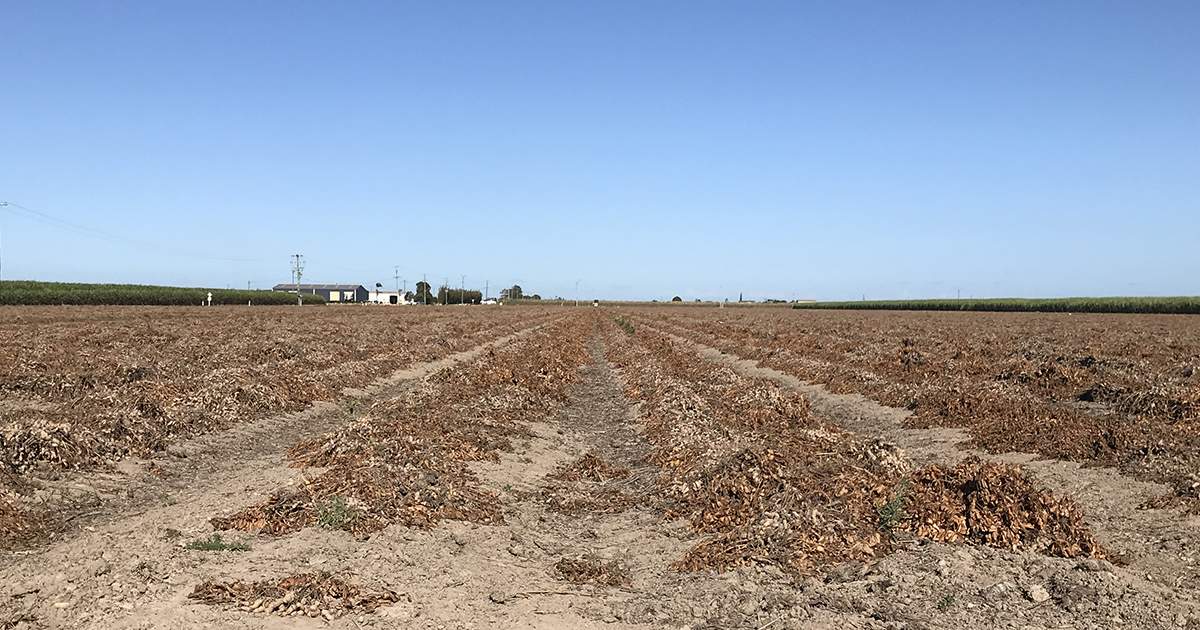
Management notes:
- Peanuts are still drying in the paddock waiting for the thresher to come through this weekend.
- Two moisture tests conducted on Tuesday this week gave results of 14.8% and 15.8% moisture content.
- Tony is hoping to maintain moisture content around the 14% mark between now and when they reach the processing plant.
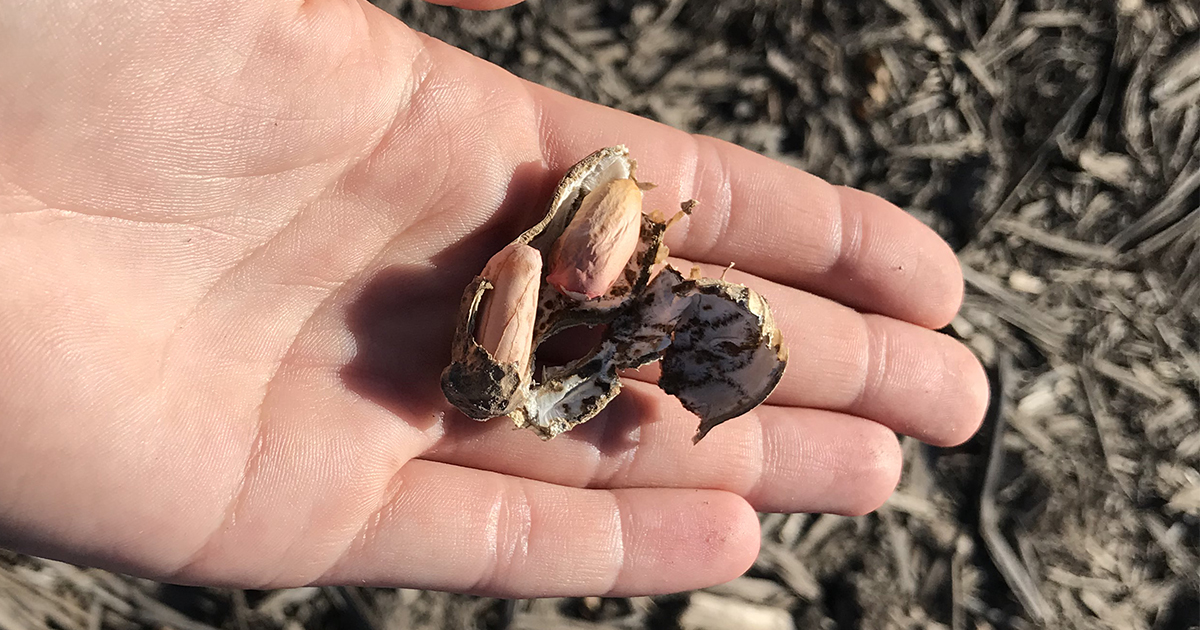 Moisture testing indicates these kernels are ready to harvest.
Moisture testing indicates these kernels are ready to harvest.
Week 24
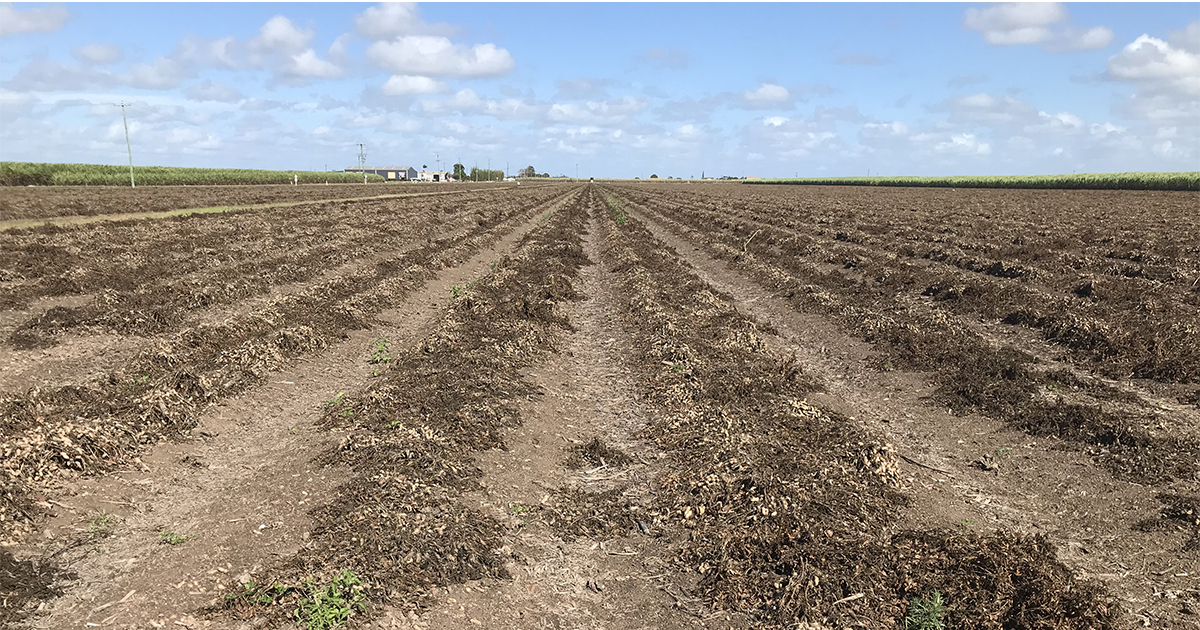
Management notes:
- Peanuts are still in the paddock awaiting threshing.
- Tony is working on machinery so that the wheel spacing suits his controlled traffic farming system before picking up the peanuts.
Week 25
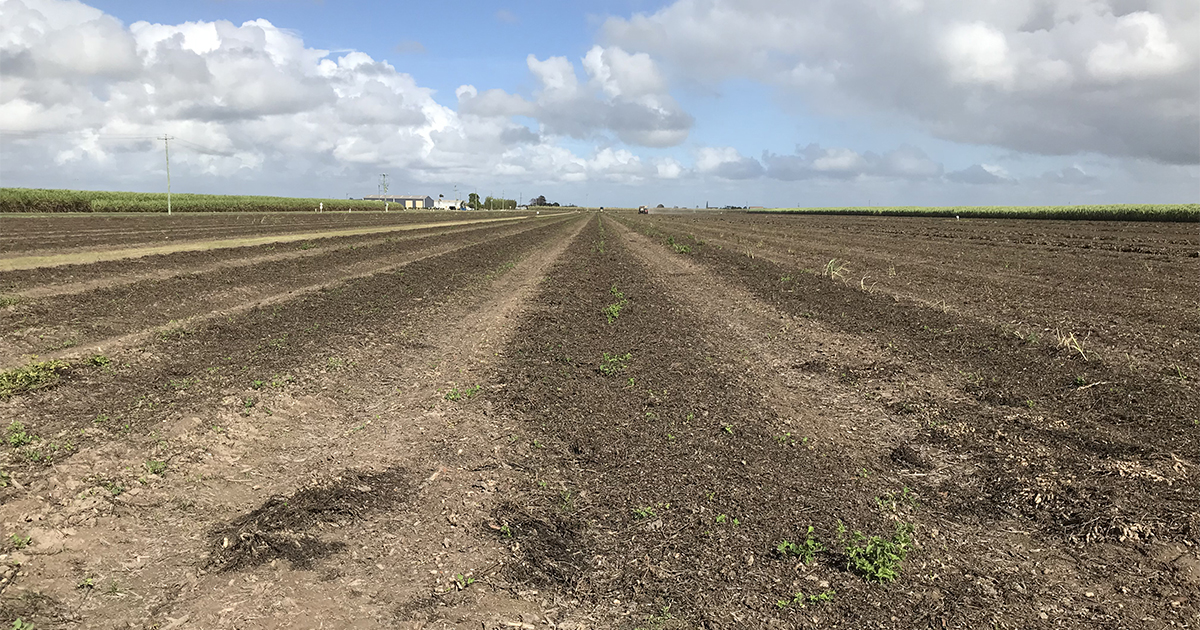
Management notes
- It took three attempts to get the peanuts threshed due to showery weather but this block is now fully harvested and sent for processing.
- Mitch estimates an average of 6 t of peanuts collected per run. Each run threshes two rows at a time. No grade out information has been received yet to support this estimation.
- The moisture contents from the first and second load were 16% and 13% respectively, with the last load threshed today expected to have a low moisture content as well.
- There is a small amount of mould noticed, mainly on small, empty pods from being exposed to the rainy weather while drying.
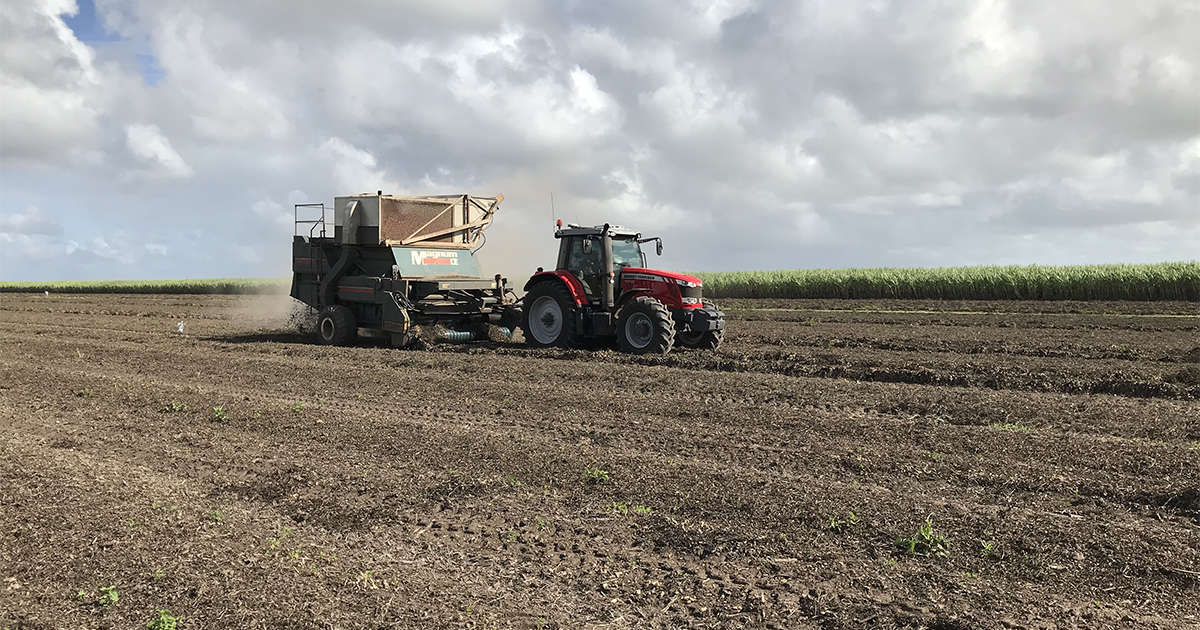
Final wrap-up:
- Peanuts are officially done and dusted for the season at the Chapmans!
- Overall there seemed to be a lot of ‘pops’ and poor pod-filling of the Kiari variety, which meant lower tonnage than expected.
- Paddock has been sprayed with herbicide to control all weeds and will be fertilised and planted with field pea in the coming week.
Read Pulse Check blog articles | Pulse Check Coastal facebook | Subscribe to the monthly newsletter



